VKRP Across the Academic Year
A combination of training opportunities, assessments, data reports, and resources help teachers get the most out of their VKRP experience.
The Big Picture
Students enter pre-kindergarten and kindergarten varying in their development of language and literacy, mathematics, self-regulation, social skills, and mental health well-being. The Virginia Kindergarten Readiness Program (VKRP), in collaboration with Virginia Literacy Partnerships (VLP), assesses pre-kindergartners and kindergartners in these areas during the first four to six weeks of school. Once assessments are complete, VKRP reports and recommended instructional resources are available to assist teachers in individualizing classroom instruction. The goal is to help students grow across the year and leave better prepared to succeed in future grades.

Key Steps of VKRP
1. Complete a Training
Division leaders, program directors, and teachers participate in an in-person or online training before the school year begins. These trainings provide an overview of the VKRP assessments, reports, and instructional resources.
2. Administer Assessments in Fall, Mid-Year (Optional), and Spring
Teachers administer the VKRP assessments for each student in their classroom. VKRP measures students’ skills in language and literacy (VALLSS), mathematics (EMAS), self-regulation, social skills, and mental health well-being (CBRS).
3. Review Reports
Once assessments are complete, online reports are available at the student, classroom, school/program, and division levels. These reports provide different ways to view and organize VKRP data.
4. Interpret Results
A big part of VKRP is helping teachers interpret and utilize their data to inform their instruction. VKRP offers Interpreting Reports documents that are designed to help teachers make sense of their VKRP data. VKRP also offers data-use trainings for schools, programs, and divisions. These opportunities can be scheduled with the VKRP team. Training sessions are designed to help teachers and instructional leaders understand how to use the data they have collected to support students’ growth and development.
5. Use VKRP Instructional Resources
VKRP offers instructional resources that include evidence-based strategies and activities to support student learning in the areas of mathematics, self-regulation, and social skills. Instructional resources are linked within reports and are also readily available in the VKRP Resources section of VAConnects.
6. Build Strong Home-School Connections
Teachers have the option of sharing a Family Information Report and Family Resource Packet with families. The Family Information Report provides information about student VKRP scores. The Family Resources Packets provide information about the mathematics, self-regulation, and social skills students will work on during the year, as well as suggested at-home activities for families to try.

